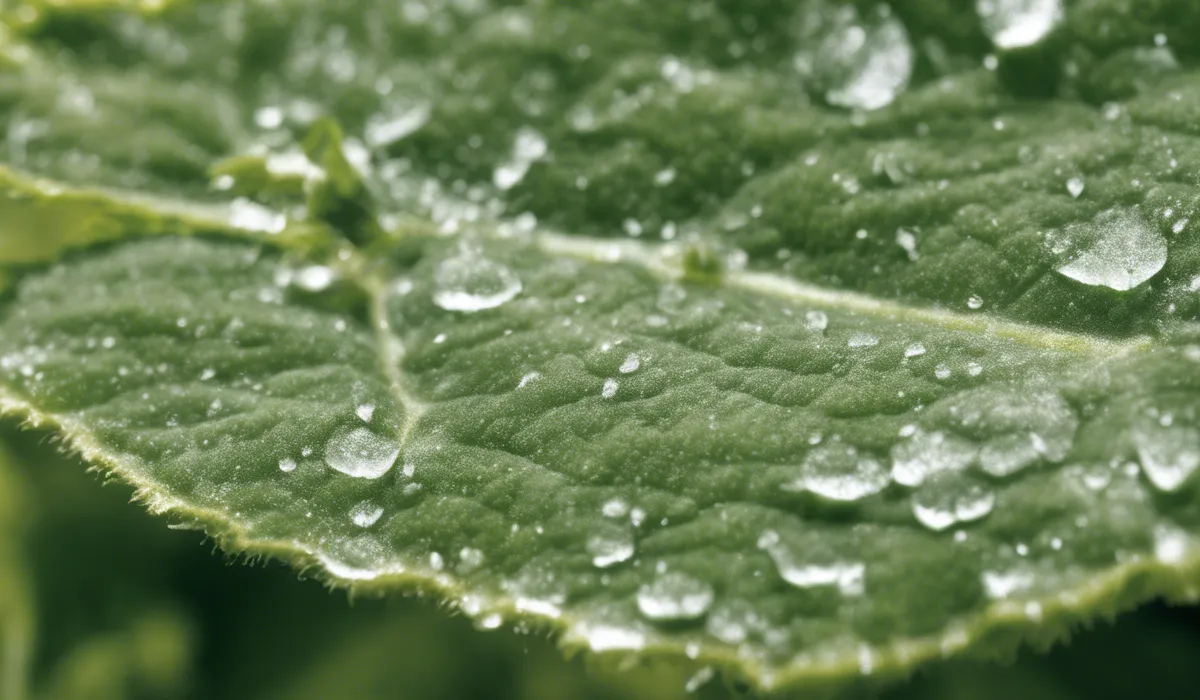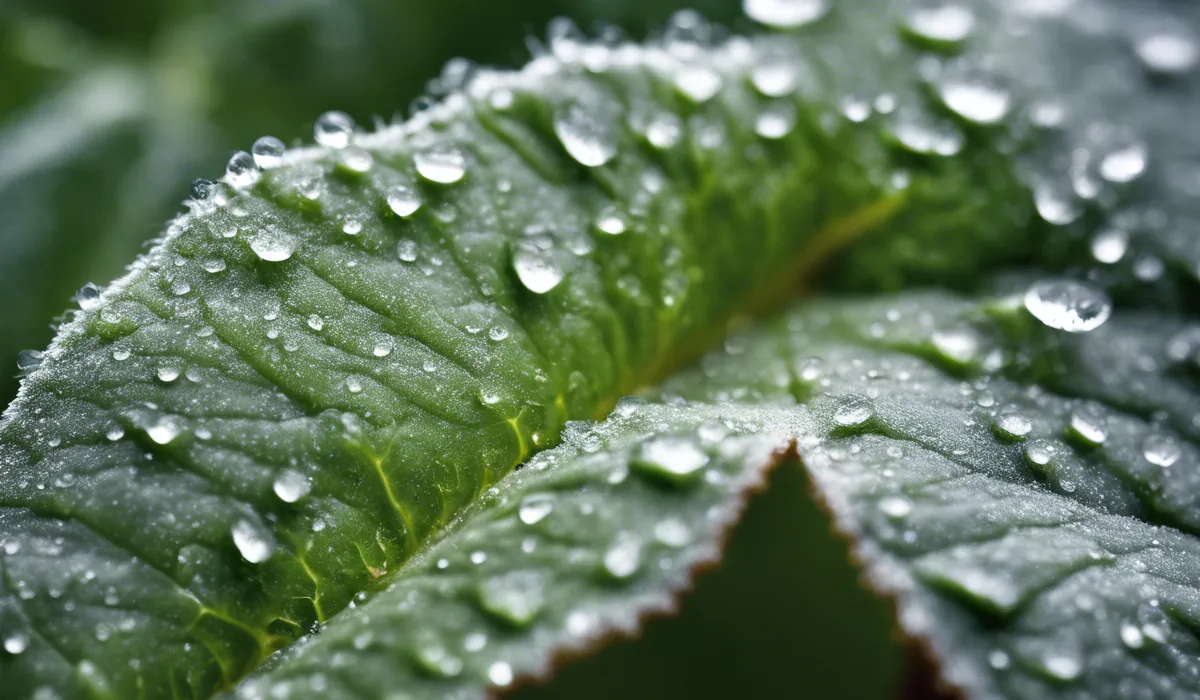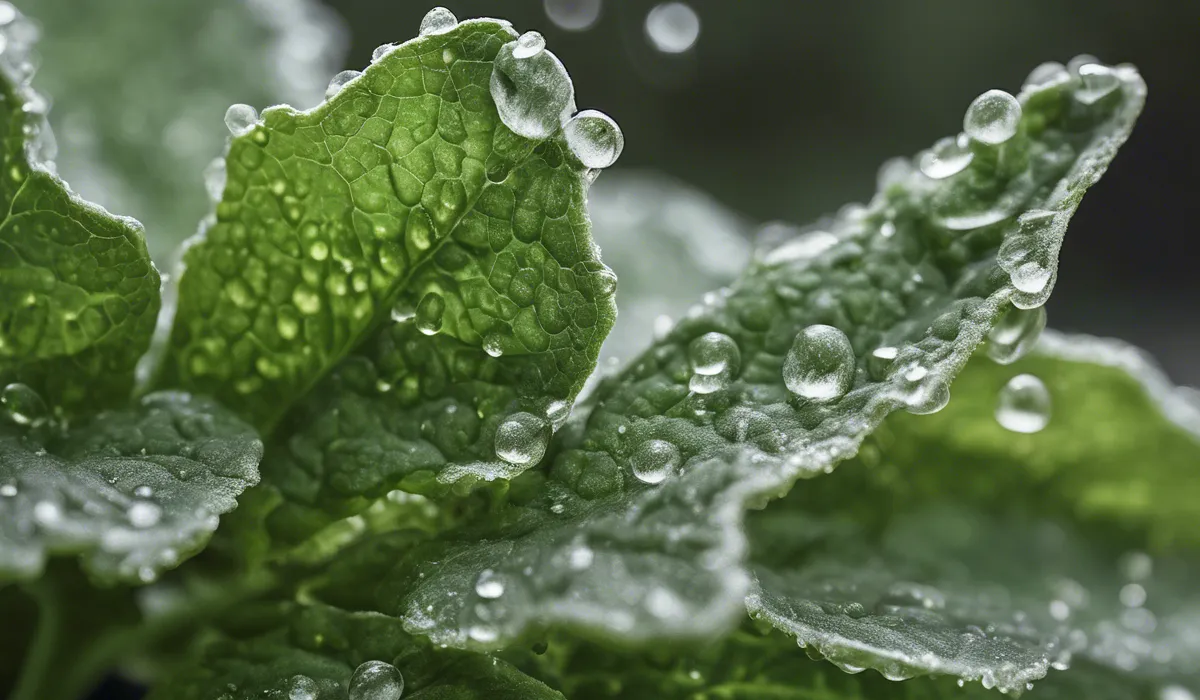Vinegar solution, with a mix of 2-3 tablespoons of apple cider vinegar per gallon of water, can instantly kill powdery mildew when sprayed directly onto the affected plants. Ensure thorough coverage for effectiveness.
Understanding Powdery Mildew

Definition and Identification of Powdery Mildew
Powdery mildew is a fungal disease that affects a wide range of plants. This fungus grows as white or gray powdery spots on the leaves and stems.
The spots may start small, but they can quickly spread, covering large areas of the plant. Powdery mildew can make the leaves look like they have been dusted with flour.
Sometimes, the leaves may turn yellow or brown, and they can even die and fall off.
Conditions that Favor Powdery Mildew Growth
Powdery mildew loves warm, dry climates with cool nights. It thrives in areas with high humidity and moderate temperatures.
This fungus does not need water on the leaves to grow, which is why it can be a problem even in dry conditions. Too much shade and poor air circulation can also make plants more likely to get powdery mildew.
Plants Commonly Affected by Powdery Mildew
Many plants can get powdery mildew, but some are more likely to have it. These include cucumbers, pumpkins, squash, grapes, roses, and many others.
Gardeners often see powdery mildew on the leaves of these plants. It is important to check your plants often to catch the fungus early.
Chemical Treatments

Overview of Fungicides
Fungicides are chemicals that can control fungal diseases like powdery mildew. There are two main types of fungicides, contact and systemic.
Contact fungicides work on the surface of the plant. They can kill the fungus when it touches the chemical. Systemic fungicides go inside the plant and protect it from the inside out.
Contact Fungicides
Contact fungicides can kill powdery mildew on the parts of the plant they are sprayed on. They do not move inside the plant, so you have to make sure to cover all the affected areas well. These fungicides can stop the spread of the disease when used correctly.
Systemic Fungicides
Systemic fungicides are absorbed by the plant and can protect it for a longer time. These fungicides can fight the disease even if it has not reached all parts of the plant yet.
They can be more effective than contact fungicides, but they must be used carefully to avoid harm to the plant and the environment.
Specific Chemicals Effective Against Powdery Mildew
Potassium Bicarbonate
Potassium bicarbonate is a contact fungicide that can quickly kill powdery mildew. When sprayed on plants, it changes the surface pH and makes it hard for the fungus to survive.
It is a safe option for many plants and can be used up to the day of harvest.
Sulfur-based Fungicides
Sulfur has been used for a long time to control powdery mildew. It can stop the fungus from growing and kill it.
Sulfur is best used before the disease starts or at the very first signs. It is important to follow the label directions to use it safely.
Copper-based Fungicides
Copper-based fungicides can also control powdery mildew. They can stop the fungus from growing and prevent it from spreading.
Copper fungicides are often used in organic farming, but they can be harmful to some plants if used too much. Always use them according to the label instructions.
Natural and Organic Remedies

Homemade Solutions
Baking Soda and Water Mixture
A simple mixture of baking soda and water can help control powdery mildew. Mix one tablespoon of baking soda with a gallon of water and spray it on the plants.
This mixture can change the pH on the leaf surface, making it less welcoming for the mildew.
Milk and Water Solution
Some gardeners use a milk and water solution to fight powdery mildew. Mix one part milk to two parts water and spray it on the affected plants.
The milk can help boost the plant’s immune system and prevent the mildew from growing.
Commercial Organic Products
Neem Oil
Neem oil is a natural product that can control many plant diseases, including powdery mildew.
It works by stopping the mildew spores from growing. Neem oil is safe for most plants and is a popular choice for organic gardeners.
Horticultural Oils
Horticultural oils can smother the powdery mildew spores and prevent them from spreading.
These oils are light and designed not to harm the plant. They can be a good choice for controlling mildew on delicate plants.
Prevention Strategies
Proper Plant Spacing and Pruning
Keeping plants spaced well and pruned can help prevent powdery mildew. Good spacing allows air to flow between the plants, reducing humidity.
Pruning helps increase light penetration and air circulation, making it harder for the mildew to thrive.
Increasing Air Circulation
Good air circulation is important to prevent powdery mildew. Make sure plants are not crowded and that air can move freely around them.
This can help keep the leaves dry and reduce the chances of mildew developing.
Regular Monitoring for Early Detection
Check your plants often for signs of powdery mildew. Catching it early can make it easier to control.
Look for the white or gray powdery spots on the leaves and act quickly if you find them. Early treatment is the key to preventing the spread of this disease.
FAQs About Killing Powdery Mildew Instantly
What is an effective natural remedy to kill powdery mildew instantly?
A vinegar solution, specifically 2-3 tablespoons of apple cider vinegar per gallon of water, can instantly kill powdery mildew when sprayed directly onto the affected plants.
How should the vinegar solution be applied to ensure it kills powdery mildew?
Ensure thorough coverage by spraying the vinegar solution directly onto all affected areas of the plant for effectiveness.
Can apple cider vinegar be used on all types of plants to kill powdery mildew?
While apple cider vinegar can be effective against powdery mildew, it’s important to test it on a small area first as some plants may be sensitive to the acidity.
Is the vinegar solution a preventive measure or a treatment for active powdery mildew infestations?
The vinegar solution is used as a treatment for active powdery mildew infestations.
How often should the vinegar solution be applied to kill powdery mildew?
For best results, apply the vinegar solution as soon as powdery mildew is detected and repeat as necessary while monitoring the plant’s response.
Final Thoughts
To eradicate powdery mildew swiftly, a vinegar solution is highly effective. Mixing 2-3 tablespoons of apple cider vinegar per gallon of water and spraying it directly on the afflicted plants can kill the fungus immediately.
It is crucial to ensure that the solution thoroughly coats the plants for maximum effectiveness.
